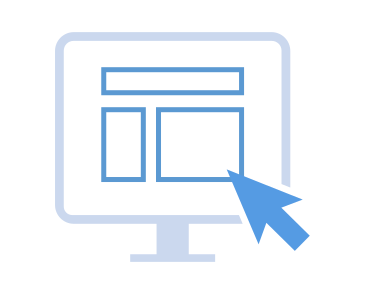Peer support is happening in your organization. It’s happening in every organization.
Yet research firm Gartner Inc. say only 1%-5% of enterprise organizations are working to track and govern peer support—and facilitate it at scale. In most organizations, it happens under the radar.
Without clear visibility of where, why, and how peer IT support is happening, most organizations don’t really know if peer support is delivering a net gain, or distracting workers from their jobs—when they already have a service desk in place.
So, is peer IT support right for your organization?
Grassroots vs Facilitates Support
Grassroots peer support happens organically. People just do it to help each other out. Facilitated peer support is actively encouraged and supported by the organization. Facilitated peer support takes local knowledge that is already being shared, captures it, and shares it on a global scale to scale up the benefits of organizational knowledge.
Globalising peer support is a game-changer for productivity. It helps organizations avoid mass reinvention of the wheel (e.g. waste). And it could be the single biggest efficiency gain waiting to happen in your organization.
Do you really need peer support?
Deciding if you want to put time and money into scaling-up peer IT support should be a strategic IT decision. Do you really want your employees spending time helping each other with IT and application issues? Or do you want them to stick to the roles they were hired for?
This question is more challenging than it first appears. Answering it requires some deeper questions:
- What sort of IT support are the service desk providing?
- What sort of support are employees providing to each other?
- Where do IT support and peer support overlap
- Where are they separated/distinct?
- Are employees providing the kind of assistance that IT people can’t? This is very often true.
Most organizations don’t have clear visibility of peer support because they don’t have a system of record to track it. Without a system, peer support happens out of sight. It’s a business blind spot. And blind spots mean hidden risks. But also hidden opportunities for a boost in productivity.
Imagine a stock trader starting at a Wall Street firm. When they arrive on day one, they see a brand-new PC with multiple screens ready-to-use. So far, so good. But this new firm uses a slightly different set of applications from their last. Some of them aren’t familiar. Who can they get help from? Not IT.
Employees can provide help with app functionality that IT people can’t. IT people are more concerned with keeping apps running than what employees are doing with them. IT people are not application domain specialists. Your app Subject Matter Experts (SMEs) are the people that use them every day. In this instance, other traders.
What does peer support look like in your organization?
To focus a peer support initiative, you need to work out which types of support the service desk can/should provide and which types of support employees can/should provide:
- Tech-savvy employees can often help with desktop and printer issues, as well as application expertise. But should they? Part of the answer involves thinking about the cost of an employee’s time versus a desktop support technician or printer engineer. Context and urgency also plays a part. What if IT can’t fix it in time?
- Application-savvy IT people can often help employees find more productive ways of working (which in some organisations is made official through a Business Productivity Team model).
- When application servers go down, that’s strictly IT’s job.
- Cloud apps can be a grey area. When a cloud Marketing Automation platform goes offline, the CMO is more likely to contact vendor support directly, instead of raising a ticket and waiting for IT to step in as a middleman.
- Remember that your employees are not a homogenous group. Development teams are very tech-savvy. So are digital marketers. But that still doesn’t mean you’d let them into your datacenter.
Work out what each of the two groups should and shouldn’t be doing. But don’t get bogged down in analysis paralysis. You have to start somewhere, even if you don’t have a complete picture. Be agile. Start with capturing and sharing high-value, high-demand knowledge, and work from there. Learn as you go.

To make this happen, you might need to make some changes. If you don’t want employees spending time on low-value IT issues, make it clear what should be escalated immediately to the service desk. That’s simple enough.
But what about application expertise? This is more of a training issue. Should your service desk get involved? Or do you need to create a Business Productivity Team to take ownership of what application best practice looks like and make sure this knowledge is spread to relevant employees? The middle route is to send them for external training (or bring in a trainer).
Pragmatism says you should start by asking employees to refer all low-level support tasks to the service desk. Reality says your service desk may be swamped by a sudden spike in demand. After all, peer support is naturally invisible (it happens outside of a system of record). That means you have no real idea how much peer support activity is happening in your organization right now—until you find out.
This is why you need to do some discovery activity before you start issuing peer support policies or rushing into implementing a peer support platform. Understanding your peer support culture is a critical success factor. Start with some understanding. Then grow that understanding over time—while delivering some early value.
So how do you decide if facilitating and scaling-up peer support is right for your organization?
FACTOR 1: How good is your service desk?
The performance of your service desk has an influence on the scope of peer IT support in your organization. There is an inverse correlation between how good your service desk is, and how much peer support is happening out of sight.
If an employee knows she has to wait 20 minutes for the service desk to pick up the phone, she will ask her peers first—to avoid the wait. If she isn’t confident that the service desk will be able to solve her issue, she will ask her peers first. Conversely, if past experience tells her that the service desk will turn up fast and get the job done first time, she’ll call.
In organizations where the service desk is slow to respond, it’s likely that peer support has grown to fill the gap. That means there’s something already there that can be scaled-up (which will take some of the strain away from the service desk). With less firefighting to attend to, the service desk will have more time to apply improvements—and also help to expand the peer support initiative. It’s a virtuous cycle.

SOLUTIONS: Unified Self-Service Portal
FACTOR 2: Culture
If you have a collaborative culture, where your people are already sharing knowledge and helping each other out, your organization is in good shape to scale that up.
If your culture is a dog-eat-dog culture, where knowledge is considered power and departments don’t work well together, don’t expect people to share readily . If this is what your corporate culture looks like, you’ve got bigger problems to solve first. A collaborative culture is a pre-requisite to encouraging and scaling peer support.

FACTOR 3: What’s good for one team may be bad for another
Peer IT support may be appropriate in some areas but not others. Analyse roles, mission criticality, support requirements, and support preferences to identify whether peer support adds value by improving productivity—or causes a reduction in productivity. For example, you don’t want call center agents abandoning their posts to fix a printer during peak demand.
Look for the pockets of knowledge that exist in one area that can be quickly scaled across the organisation. These are the big wins for peer support. Capturing, curating, and sharing support knowledge that is in-demand across the whole organization is where most value can be created most quickly.
RELATED: Hope is Not a Strategy: Self-Service Adoption Relies on Change Management
FACTOR 4: Do you have the right technology?
Technology is critical for facilitating peer IT support at a global scale—as technology can cut across the physical boundaries that constrain local peer support habits. For best results, you will need an ITSM solution that has enterprise collaboration capabilities baked into the product—making it a system of engagement, instead of a system of record. This means three things:
- If you don’t already have an enterprise collaboration platform in place you don’t need to buy one.
- If you already have a collaboration platform, you can integrate it into your ITSM tool. Look for tools that have off-the-shelf connectors to popular collaboration platforms.
- When collaboration is baked-in to your ITSM tool, everything is visible to the service desk; meaning peer IT support is no longer a blind spot. It’s trackable. IT can intervene if necessary to resolve individual issues that aren’t being closed, or provide guidance and training to drive improvement.
TAKEAWAYS
- Peer support interaction that happens offline may solve an individual issue, but it misses an opportunity to capture and share widely. Peer support that happens within a system of record leaves a searchable record for everyone to benefit from.
- If you have a collaborative culture, scaling peer support will get better results, faster.
- Focus on the sharing of high-value, high-demand knowledge first.
- Cultivate an open forum which doesn’t restrict the types of help people are asking for. It shouldn’t be limited to IT and application issues. There are many reasons why an employee might want to tap into your organizational knowledge pool.
- Peer support shouldn’t stand alone. It has to be managed as a support channel which is part of a broader omnichannel support strategy. For example, when the service desk sees many identical incidents, a problem record is created and the ITIL Problem Management practice is triggered. The same approach should apply to frequently peer support issues.
- Certain types of support work should always be referred immediately to the service desk. Communicate clear policies for what non-IT people shouldn’t be doing.
- Be aware of change. If you find that facilitating peer IT support is not a priority for your organization today, it might be soon. Review the situation in six months or a year.
Find out more about how collaboration and gamification can help you scale-up peer support.
GET STARTED WITH ITIL 4
 Contact us today for a free, no-obligation chat with a qualified consultant
Contact us today for a free, no-obligation chat with a qualified consultant
 ITIL 4 Software: Accelerate ITIL 4 Adoption with Automation
ITIL 4 Software: Accelerate ITIL 4 Adoption with Automation
 Sign-up for blog notifications to make sure you don’t miss out
Sign-up for blog notifications to make sure you don’t miss out
MORE ABOUT ITIL 4
- What’s new in ITIL 4?
- What are the 4 Dimensions of ITIL 4?
- The 7 Guiding Principles of ITIL 4?
- The ITIL 4 Service Value System
ITIL 4© is a registered trademark of AXELOS Limited. All rights reserved.